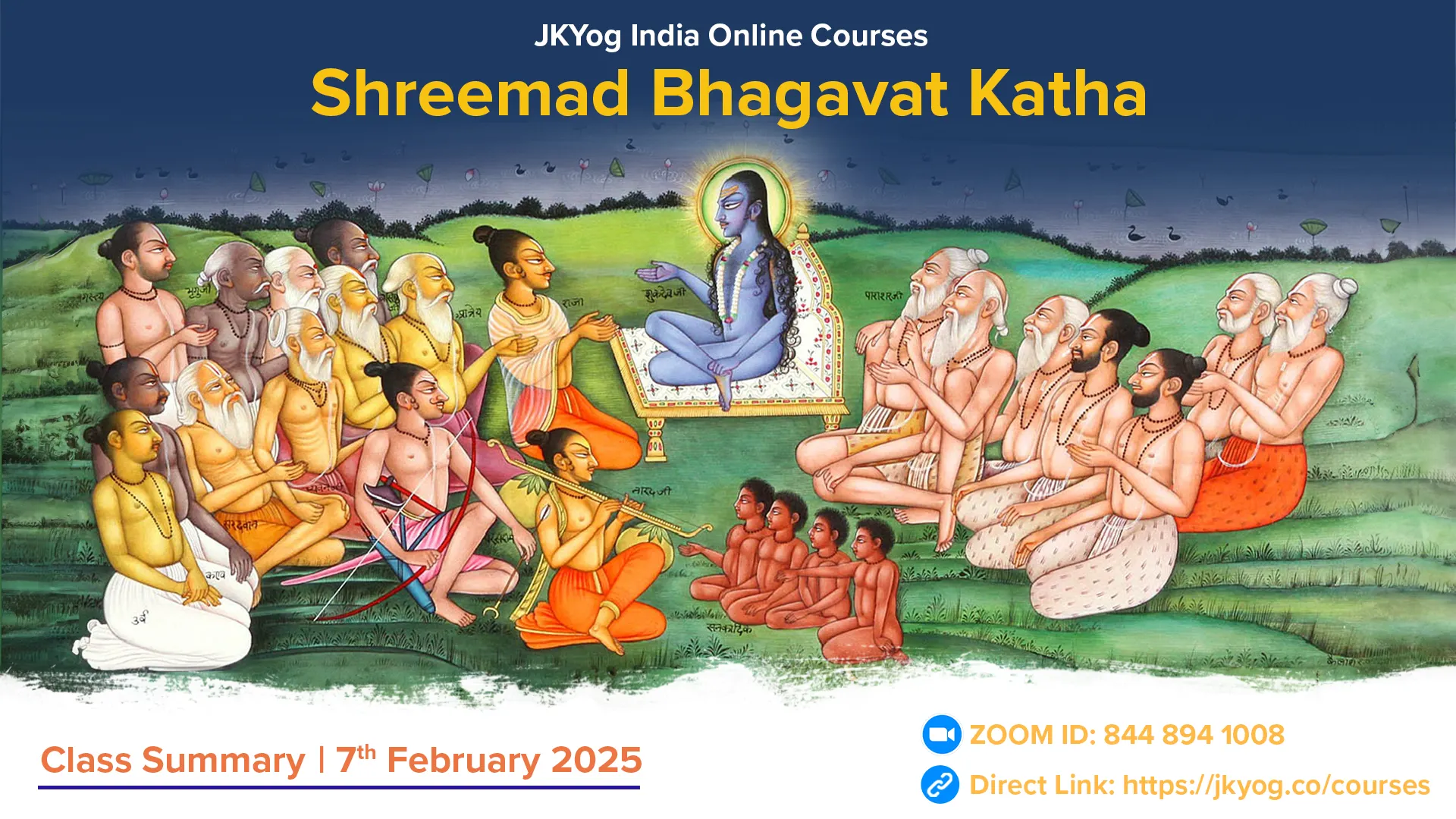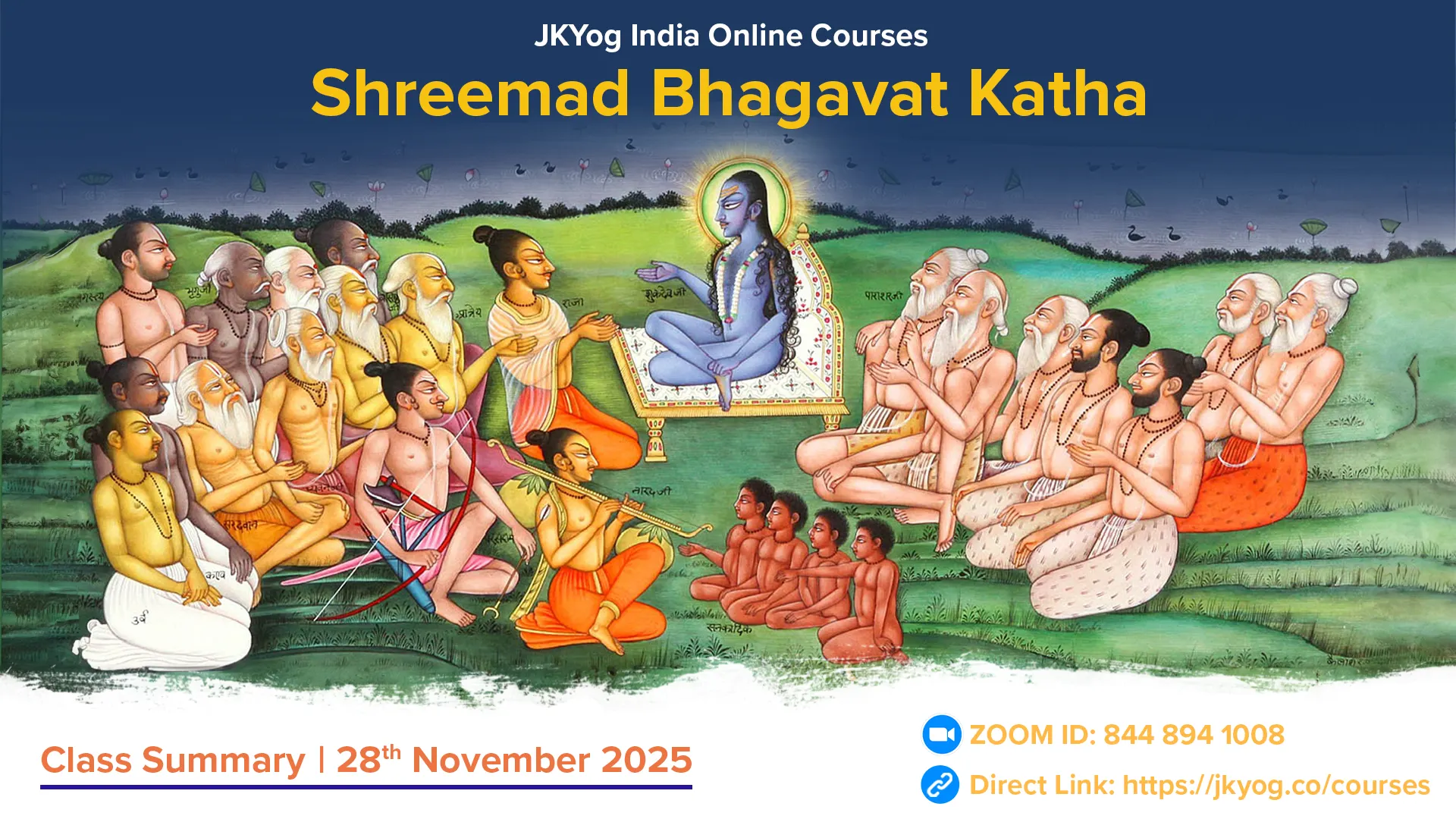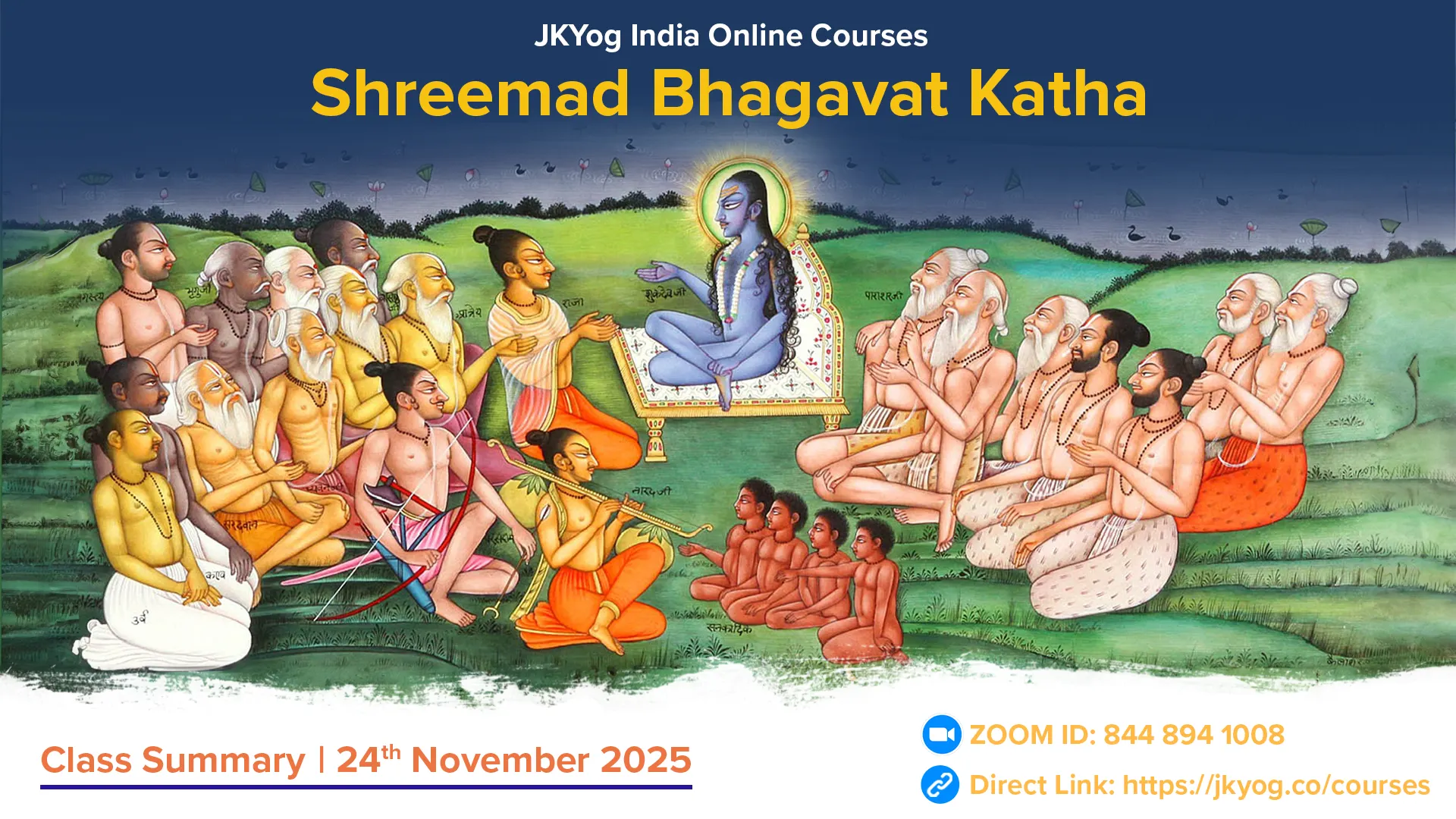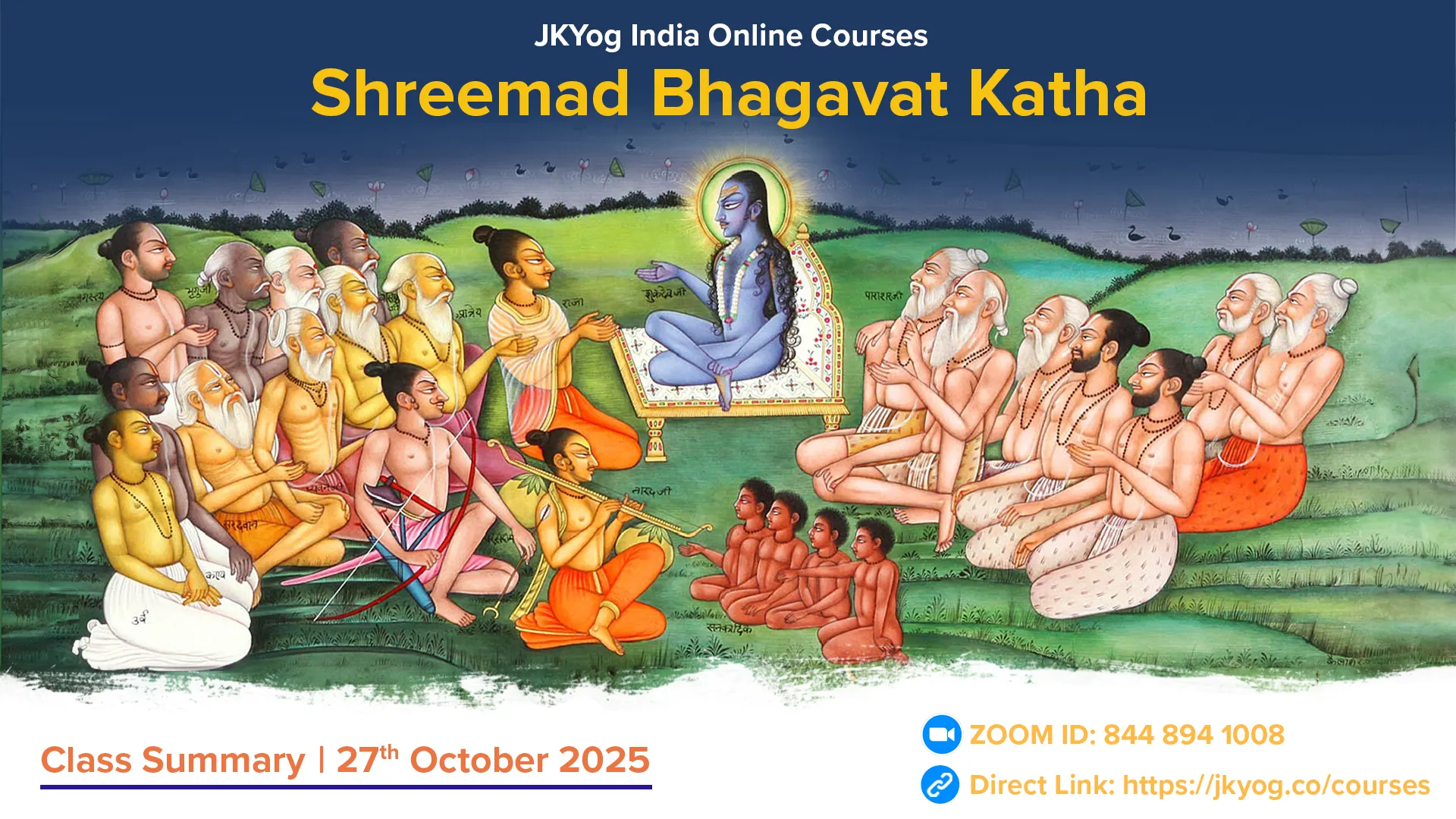Shreemad Bhagavat Mahapuran- Canto: 5, Chapter: 25-26
Shree Shukdevji says, "O King! Thirty thousand Yojans (1,60,000 miles) below Patal Lok, Bhagwan's tamasic eternal Shakti is known as 'Anant.' Since He is the embodiment of Ahankar (greater ego), He merges the seer and the seen (Drashta and Drishya) into one. That is why the devotees of the Pancharatra Agam refer to Him as 'Sankarshan.'
Bhagwan Anant has a thousand heads; on one of them, the entire Bhu-mandal appears as small as a mustard seed. When the time of Pralay (cosmic dissolution) arrives, and He wishes to conclude this universe, Rudra, named Sankarshan, manifests from the space between His furrowed brows, which whirl with anger. This Vyuh (manifestation) has eleven forms, each with three eyes and holding a Trishul (trident).
Bhagwan Sankarshan's lotus feet are round, radiant, and adorned with glowing red nails. When several Nag kings, along with their devotees, bow to Him with devotion, they see reflections of their dazzling earrings and beautiful faces in His nails and become filled with bliss. The daughters of many Nag kings apply fragrant Arghya, Chandan, and Kumkum on Bhagwan Sankarshan's long, graceful, white arms, which shine like silver pillars. As they do so, their hearts overflow with love, and with emotion-filled eyes, they gaze at His blissful face, their shyness evident in their gentle smiles. Bhagwan Anant, the ocean of infinite virtues, restrains His fierce, intolerable anger and remains seated there for the welfare of all worlds.
Devas, Asuras, Nagas, Siddhas, Gandharvas, Vidyadhars, and Munis constantly meditate on Bhagwan Anant. Their eyes brim with love and devotion and their hearts are overwhelmed with divine emotions. With His sweet voice, He delights His attendants and the celestial beings. He wears a blue garment, a single earring glows brightly in His ear, and His beautiful hand rests on the plough handle.
Bhagwan Sankarshan adorns a Vaijayanti garland around His neck, which never loses its lustre. Swarms of intoxicated bees, enchanted by the fresh fragrance of Tulsi and the nectar of the flowers, constantly buzz around, enhancing its beauty. By listening to and meditating upon the glories of Bhagwan Anant, the hearts of seekers longing for liberation (Mumukshus) become blessed with His grace. He immediately severs the deep knot of ignorance—comprising Sattva, Rajas, and Tamas—that binds them to the accumulated Karma of infinite lifetimes.
Once, Brahmaji's son, sage Narad, along with Tumburu Gandharva, sang His divine glories in Brahmaji's assembly. He proclaimed that with just one glance from Bhagwan Sankarshan, the three Gunas—Sattva, Rajas, and Tamas—become active in the cosmic cycle of creation, sustenance, and dissolution. He is endless and beginningless, yet He upholds the entire cosmos within Himself. Who can truly comprehend such a divine Tattva (principle)?
To captivate His devotees, Bhagwan Sankarshan performs heroic pastimes, which even lionhearted warriors revere as an ideal. If a distressed or fallen person, whether by chance, in jest, or unintentionally, utters His name, he destroys his sins and those of others. Who else, then, should a seeker of liberation take refuge in other than this merciful Shesh Bhagwan?
The entire Earth, along with its mountains, rivers, and oceans, rests like mere dust particles on His head. His valour is boundless, beyond the measure of even a thousand tongues. Residing in Rasatal, He effortlessly upholds the Earth through His divine glory.
Shree Shukdevji tells Parikshit, "O King, the various elevated and degraded states that human beings attain due to their actions are as I have narrated in response to your question. Now, tell me what more you wish to hear."
King Parikshit then asks, "O Maharshi! Why do people attain such vastly different fates?"
Shree Shukdevji replies, "O King! Those who perform Karma (actions) are influenced by the three Gunas—Sattva, Rajas, and Tamas—each leading to a different nature, which in turn shapes their faith. Due to these variations in nature and faith, their Karmic results also differ, and every being attains different destinies according to their actions.
Even those who commit sinful deeds receive results according to their faith. Under the influence of ignorance, they are driven by desires and engage in sinful acts, leading them to suffer various forms of Narak (hellish torments). Now, I will describe those Narakic states in detail."
Where is Narak, How Many Types of Narak Are There, and What Are Their Forms?
Parikshit asked – Are the Naraks (hellish realms) that you are about to describe located in a specific place on this Earth, outside the Triloki (three worlds), or somewhere within it?
Shree Shukadevji said – These Naraks are situated within the Triloki, to the south of the Earth, above the waters. In this direction, the Agnishwatta and other Pitris (ancestral deities) also reside, who meditate with a single-minded focus for the well-being of their descendants. In this Narak Lok, Surya’s son Yam resides along with his attendants. He delivers judgment to the deceased beings brought to him by his messengers and metes out punishments according to their sinful deeds.
Some sources describe the number of Naraks as twenty-one, while others mention twenty-eight in total. Now, I will describe their names, forms, and characteristics. These Naraks are as follows:
- Tamishra
- Andhatamishra
- Raurav
- Maharaurav
- Kumbhipak
- Kalsutra
- Asipatravan
- Sukarmukh
- Andhakup
- Krumibhojan
- Sandansh
- Taptasurmi
- Vajrakantakashalmali
- Vaitarani
- Puyod
- Pranarodh
- Vishasan
- Lalabhaksh
- Sarameyadan
- Avichi
- Ayahpan
Additionally, there are seven more Naraks, making a total of twenty-eight:
- Ksharakardam
- Rakshoganabhojan
- Shulaprot
- Dandashuk
- Avatanirodhan
- Parivartan
- Suchimukh
In these dreadful Naraks, living beings suffer severe torments according to their sinful deeds.
Tamishra Narak
Those who deceitfully steal others' wealth, children, or spouse are bound by Yamadutas with the noose of time (Kalpash) and thrown into this dreadful Narak. It is engulfed in thick darkness, with no food or water. The condemned souls are mercilessly beaten with sticks and subjected to terrifying tortures until they lose consciousness due to unbearable pain.
Andhatamishra Narak
A person who engages in illicit relations with someone else's spouse through deception is sent to Andhatamishra Narak. The torment inflicted here is so severe that the sinner loses all sense of awareness, similar to a tree that has been uprooted and falls lifelessly. This is why it is called Andhatamishra, meaning "blinding darkness."
Raurav and Maharaurav Narak
Those who believe that the body is everything and selfishly torment others for personal gain, thinking, "this wealth and women are mine," are sent to Raurav Narak after death. In this hell, the souls of the creatures they had harmed in their lifetime take the terrifying form of Ruru, a fierce being, and inflict extreme pain upon them.
Kumbhipak Narak
Cruel individuals who kill living beings for their own consumption and cook them for food are taken to Kumbhipak Narak by Yamadutas. Here, they are thrown into boiling oil and suffer extreme agony.
Kalsutra Narak
Those who oppose their parents, saints, and the teachings of the Vedas in this world are taken to Kalsutra Narak by Yamadutas. This Narak is vast, spanning 10,000 Yojans (80,000 miles).
Vaitarani River
Kings and rulers who are born into noble families but transgress the boundaries of Dharma are thrown into the Vaitarani River upon death. This river, which separates the hellish realms, is filled with filth, urine, pus, blood, hair, nails, bones, fat, flesh, and marrow. Those who fall into it are attacked by the aquatic creatures of the river. However, due to their accumulated sins, their souls remain bound to their bodies, forcing them to endure this suffering while realizing that it is the result of their own misdeeds.
Puyod Ocean
Those who abandon the principles of cleanliness and moral conduct, behaving like animals without any sense of shame, are cast into Puyod, an ocean filled with filth, excrement, urine, phlegm, and other vile substances. Here, they are forcedto consume these disgusting elements as part of their punishment.
Shukadevji tells King Parikshit that there are hundreds and thousands of Naraks in Yamlok, some of which have been mentioned here, while many others remain undescribed. Every sinful soul is sent to a specific Narak based on their karma, while the virtuous and righteous ones ascend to Swarg (heavenly realms).
Once a soul has experienced most of its karmic rewards or punishments in Swarg or Narak, it is reborn on Earth according to the remaining balance of its Punya (virtue) and Paap (sin).
However, apart from this cycle of Punya and Paap, there is another path—Nivritti Marga (the path of God-realisation), which was elaborated in the second canto of the Bhagavat.
The 14 realms described in the Puranas constitute the entire Brahmand (universe), which is a gross manifestation of Shree Narayan, created through the influence of His Maya (illusory energy). This knowledge, though vast, has been summarised here.
The Nirgun (formless, transcendental) aspect of the Supreme Divine, as described in the Upanishads, is beyond the reach of the mind and intellect. However, by listening to, reading, and contemplating the Sagun (manifested, perceivable) form of Bhagwan, one's intellect is purified with faith and devotion, gradually leading to the realisation of the Nirgun aspect.
Thus, a spiritual seeker must first meditate upon the Sagun form of Bhagwan until their mind attains stability, after which they can gradually shift their focus toward the Nirgun aspect.
Shukadevji concludes by telling Parikshit that he has described the Earth, its seven islands, continents, rivers, mountains, sky, oceans, netherworlds (Patal), directions, Naraks, celestial bodies, and other realms—all of which constitute the divine, cosmic form of Bhagwan, which serves as the foundation of all existence.
Summary: JKYog India Online Class- Shreemad Bhagavat Katha [Hindi]- 07.02.2025








